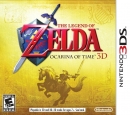Discussion about new features nonexistant in original Tetris:
Soft drops were first implemented in Nintendo releases of Tetris so that pieces would be able to drop faster while not lock as to slide into gaps. The other option is hard dropping, which originated in early PC games such as Microsoft Tetris, a game developed by Dave Edson and bundled with Microsoft Entertainment Pack. With hard dropping, a piece falls and locks in one frame. Newer Tetris games feature both options. Some games have their locking roles reversed, with soft dropping making the pieces drop faster and locking down, and hard dropping making the pieces drop instantly but not lock.
Single direction rotation is an older restriction that has since been ruled out in nearly every new official release by the favor of separate buttons for clockwise and one for counterclockwise rotation. In traditional games, the unsymmetrical vertical orientation I-, Z-, and S-pieces will fill the same columns for each clockwise and counter clockwise rotation. Some games vary this by allowing two possible column orientations: one for counter clockwise and one for clockwise rotations. Double rotation, only seen in progressive clones such as Quadra and DTET, rotates the piece 180 degrees.
One of the features most appreciated by skilled players is wall kick, or the ability of rotating the pieces even if these touch the left or right walls. In the NES version, for example, if a Z piece is "vertically" aligned and falling touching the left wall, the player cannot rotate the piece, giving the impression that the rotate buttons are locked. In this situation, the player has to move the piece one position to the right before rotating it, losing precious time. Proper implementations of wall kick first appeared in the arcade version of Tetris by Atari Games.
Piece preview allows a look at the next piece to enter the field. This feature has been implemented since the earliest games, though in those early games, having the preview turned on made the score increase more slowly.
[edit] Newest features
Newer versions of Tetris add different scoring goals not present in traditional Tetris. As achieving these goals while not topping out becomes more difficult, these games usually add a few features to help the player.
The New Tetris and The Next Tetris are the first official Tetris games to feature multiple piece previews, showing 3 in advance. Tetris Worlds for PCs and game consoles add 5 more, while the GBA version retaines the 3 piece preview. Tetris DS uses the 6-piece preview.
The "phantom piece" (referred to in some versions, such as the Tetris Mania cell phone game, as the "ghost") is a feature that shows an obscuration in the shape of the current piece over where that piece would drop. The feature disposes with the old problem of misdrops and is relatively new.
Hold piece is an optional ability to reserve a piece for later use, allowing a player to either avoid undesirable pieces or save desirable ones, usually the I piece or a piece needed to complete another goal. Some clones featured it as a powerup that the player could earn and use once. A hold piece available to the player at all times was first featured in The New Tetris. Games that have hold piece generally activate it when the player presses both rotate buttons simultaneously or when the player presses a dedicated button, depending on the game. When hold piece is activated, it causes the falling piece to move to the top and trade places with the hold piece. However, the feature cannot be activated twice in a row; a piece released from the hold must be dropped into the well.
Initial rotation and Initial hold are features that make the game accept rotation/hold button inputs while the next piece is still in the preview area. With initial rotation, when the player holds down the rotation button after the previous piece has locked down but before the next piece comes into the well, the next piece will come into the well in an already rotated state. Initial hold works similarly, as the piece will be already swapped with the hold piece when it enters the well. Initial rotation and Initial hold first appeared in the Tetris: The Grand Master series.
Original Tetris:
Again, it's obviously not the same game.

![]() SW-5120-1900-6153
SW-5120-1900-6153























